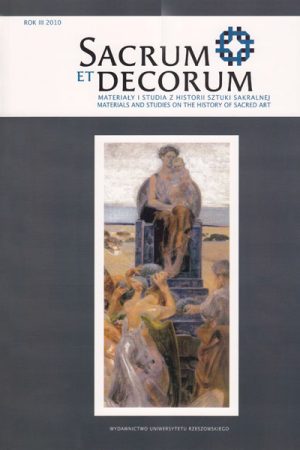The Mysterious Kraków Model and the Italian Designs by Bronisław Chromy
Keywords:
BRONISLAW CHROMY, BRONZE DOOR, RAVENNAAbstract
Among the sculptures collected in the studio of Bronislaw Chromy (born in 1925), the Krakow sculptor who could be considered one of more interesting artistic personalities in the 20th-century Poland, there is a lead model of a sculpted double door topped with a full arch. According to Chromy it is an unrealized design of the gate for St Francis Church in Ravenna. In 1973 the artist won the first award at Biennale organized by Centro Dantesco in Ravenna. One of the competition jurors, Archbishop Giovanni Fallani, supposedly encouraged the then director of Centro Dantesco, Fr. Severino Ragazzini, to commission with Chromy a bronze door for the Franciscan Church which formed a part of the museum complex in Ravenna. Fallani also encouraged Chromy to take part in a closed competition for the gate to the Basilica of St Paul Outside the Walls in Rome. Both projects have never been realized, but the formal solutions of the artist's Italian projects were used by him in the bronze doors made by him for the churches in Nienadowka and Tarnow. The first one was made popular through the exhibition in Krakow in 1980 and Zofia Halota's film, in which it played the main role, symbolically opening and closing the narrative about the sculptor's work. In the 1980s the number of commissions for sculpted bronze doors in Poland started to increase rapidly, at least in the southern part of the country. It is probable that Chromy's work contributed to its popularity as an element of the church decoration, indirectly caused by his Italian inspiration and Ravenna experience.Downloads
Published
How to Cite
Issue
Section
License
Copyright (c) 2010 Sacrum et Decorum

This work is licensed under a Creative Commons Attribution-NonCommercial-NoDerivatives 4.0 International License.
In line with the Open Access policy, authors retain full copyright to their articles – without restrictions.
Authors can deposit their articles in a repository of their choice.


